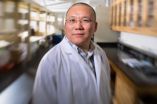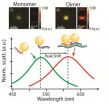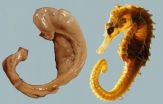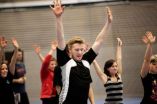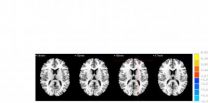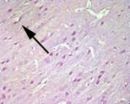Novel compound halts cocaine addiction and relapse behaviors
2014-04-23
BUFFALO, N.Y. – A novel compound that targets an important brain receptor has a dramatic effect against a host of cocaine addiction behaviors, including relapse behavior, a University at Buffalo animal study has found.
The research provides strong evidence that this may be a novel lead compound for treating cocaine addiction, for which no effective medications exist.
The UB research was published as an online preview article in Neuropsychopharmacology last week.
In the study, the compound, RO5263397, severely blunted a broad range of cocaine addiction behaviors.
"This ...
NASA sees last vestiges of Tropical Depression Jack
2014-04-23
Tropical Cyclone Jack had weakened to a tropical depression when NASA and JAXA's Tropical Rainfall Measuring Mission (TRMM) satellite passed above on April 22, 2014 at 1120 UTC/7:20 a.m. EDT.
At that time, TRMM found that Jack was devoid of almost all rainfall near the tropical cyclone's center. Outside the center was a different story, however. That's where TRMM's precipitation radar instrument found rain falling at a rate of over 130mm/hr (about 5.1 inches) in a band of thunderstorms that stretched from east of Jack's center to the south. Some of the thunderstorms even ...
EARTH Magazine: Faking quakes at full scale
2014-04-23
Alexandria, Va. – On a muggy day in mid-July 2009, a lone seven-story condominium complex northwest of Kobe, Japan, was violently shaken by an earthquake. Onlookers watched the 23-unit, wood-frame tower sway and bounce while, inside the building, furniture toppled and plates clattered to the floor. No one was hurt during the highly localized event and there was only minimal damage, in part because the building's wooden skeleton had been augmented to better resist earthquake shaking, but also because the whole event — from the seismicity to the partially furnished building ...
Some astronauts at risk for cognitive impairment, animal studies suggest
2014-04-23
Johns Hopkins scientists report that rats exposed to high-energy particles, simulating conditions astronauts would face on a long-term deep space mission, show lapses in attention and slower reaction times, even when the radiation exposure is in extremely low dose ranges.
The cognitive impairments — which affected a large subset, but far from all, of the animals — appear to be linked to protein changes in the brain, the scientists say. The findings, if found to hold true in humans, suggest it may be possible to develop a biological marker to predict sensitivity to radiation's ...
Gold nanoparticles help target, quantify breast cancer segments in a living cell
2014-04-23
WEST LAFAYETTE, Ind. - Purdue University researchers have developed a way to detect and measure cancer levels in a living cell by using tiny gold particles with tails of synthetic DNA.
A team led by Joseph Irudayaraj, professor of agricultural and biological engineering, used gold nanoparticles to target and bind to fragments of genetic material known as BRCA1 messenger RNA splice variants, which can indicate the presence and stage of breast cancer. The number of these mRNA splice variants in a cell can be determined by examining the specific signal that light produces ...
Study identifies enzymes that help fix cancer-causing DNA defects
2014-04-23
Purdue University researchers have identified an important enzyme pathway that helps prevent new cells from receiving too many or too few chromosomes, a condition that has been directly linked to cancer and other diseases.
Mark Hall, associate professor of biochemistry, found that near the end of cell division, the enzyme Cdc14 activates Yen1, an enzyme that ensures any breaks in DNA are fully repaired before the parent cell distributes copies of the genome to daughter cells. This process helps safeguard against some of the most devastating genome errors, including the ...
A key to enjoying massive online photo files may be giving up some control
2014-04-23
PITTSBURGH—The ability of individuals to store and instantly access thousands of their photos online has become a commonplace luxury, but the sheer size of these archives can be intimidating. Researchers at Carnegie Mellon University and Microsoft Research Cambridge, UK, have found people might actually enjoy their collections more by giving up a bit of control and learning to wait.
Their 14-month study showed that people reflected more on past events and developed a renewed interest in their online photos when a device called Photobox would randomly print four or five ...
AGU: Odds of storm waters overflowing Manhattan seawall up 20-fold, new study shows
2014-04-23
WASHINGTON, D.C. -- Maximum water levels in New York harbor during major storms have risen by nearly two and a half feet since the mid-1800s, making the chances of water overtopping the Manhattan seawall now at least 20 times greater than they were 170 years ago, according to a new study. Whereas sea-level rise, which is occurring globally, has raised water levels along New York harbor by nearly a foot and a half since the mid-19th century, the research shows that the maximum height of the city's "once-in-10-years" storm tide has grown additionally by almost a foot in that ...
Study finds long-term survival of human neural stem cells transplanted into primate brain
2014-04-23
Putnam Valley, NY. (Apr. 23 2014) – A team of researchers in Korea who transplanted human neural stem cells (hNSCs) into the brains of nonhuman primates and assessed cell survival and differentiation after 22 and 24 months found that the hNSCs had differentiated into neurons at 24 months and did not cause tumors.
The study will be published in a future issue of Cell Transplantation but is currently freely available on-line as an unedited early e-pub at: http://www.ingentaconnect.com/content/cog/ct/pre-prints/content-ct1117Antonucci2.
The hNSCs were labeled with magnetic ...
Scientists identify source of mysterious sound in the Southern Ocean
2014-04-23
Scientists have conclusive evidence that the source of a unique rhythmic sound, recorded for decades in the Southern Ocean and called the "bio-duck," is the Antarctic minke whale (Balaenoptera bonaerensis). First described and named by submarine personnel in the 1960s who thought it sounded like a duck, the bio-duck sound has been recorded at various locations in the Southern Ocean, but its source has remained a mystery, until now.
In February 2013, an international team of researchers deployed acoustic tags on two Antarctic minke whales in Wilhelmina Bay off the western ...
Autologous stem cell therapy improves motor function in chronic stroke victims
2014-04-23
Putnam Valley, NY. (Apr. 23, 2014) – People who have had a stroke, often suffer motor deficits with little potential to restore neurological function. However, a study conducted in Taiwan, that will be published in a future issue of Cell Transplantation, but is currently freely available on-line as an unedited early e-pub at: http://www.ingentaconnect.com/content/cog/ct/pre-prints/content-ct1168Chen, has found that when one group of stroke victims had their own peripheral blood stem cells (PBSCs) injected directly into the brain and a similar group did not, those who received ...
Too many chefs: Smaller groups exhibit more accurate decision-making
2014-04-23
The trope that the likelihood of an accurate group decision increases with the abundance of brains involved might not hold up when a collective faces a variety of factors — as often happens in life and nature. Instead, Princeton University researchers report that smaller groups actually tend to make more accurate decisions while larger assemblies may become excessively focused on only certain pieces of information.
The findings present a significant caveat to what is known about collective intelligence, or the "wisdom of crowds," wherein individual observations — even ...
Community-based weight loss program aids diabetes management
2014-04-23
Weight loss and control of blood sugar can reduce the risk of complications in patients with diabetes but this is difficult for many to achieve. A University of California, San Diego School of Medicine randomized controlled trial of obese adults with type 2 diabetes suggests that participants enrolled in a community-based structured weight loss program are able to shed more pounds, improve blood sugar control and reduce or eliminate insulin use and other medications compared to a control group.
"Support and a tailored lifestyle intervention have been shown to reduce cardiovascular ...
Physical activity keeps hippocampus healthy in people at risk for Alzheimer's disease
2014-04-23
COLLEGE PARK, Md. – A study of older adults at increased risk for Alzheimer's disease shows that moderate physical activity may protect brain health and stave off shrinkage of the hippocampus– the brain region responsible for memory and spatial orientation that is attacked first in Alzheimer's disease. Dr. J. Carson Smith, a kinesiology researcher in the University of Maryland School of Public Health who conducted the study, says that while all of us will lose some brain volume as we age, those with an increased genetic risk for Alzheimer's disease typically show greater ...
Chemical companies shore up supplement science
2014-04-23
As evidence mounts showing the potential health benefits of probiotics, antioxidants and other nutritional compounds, more and more people are taking supplements. And the chemical industry is getting in on the action. But legitimate skepticism about supplements' health effects could deter growth, so the industry is responding with clinical research to shore up health claims, according to the cover story in Chemical & Engineering News (C&EN), the weekly news magazine of the American Chemical Society.
Melody M. Bomgardner, a senior editor at C&EN, writes that about half ...
More Americans in their golden years are going hungry
2014-04-23
URBANA, Ill. - In a country as wealthy as the United States, it may come as a surprise that one in 12 seniors do not have access to adequate food due to lack of money or other financial resources. They are food insecure.
Recent research at the University of Illinois using data from the National Health and Nutrition Examination Survey (NHANES) revealed that the seniors who are dealing with hunger are also facing negative health and nutrition consequences.
"In 2011, 8.35 percent of Americans over age 60 faced the threat of hunger—that translates to 4.8 million people," ...
The surface area of the digestive tract 'only' as large as a studio apartment
2014-04-23
The internal surface area of the gastro-intestinal tract has long been considered to be between 180 and 300 square meters. Scientists at the Sahlgrenska Academy have used refined microscopic techniques that indicate a much smaller area.
"Actually, the inner surface of the gastro-intestinal tract is only as large as a normal studio apartment," says scientist Lars Fändriks.
The digestive tract, which passes from the mouth through the esophagus and onwards through the intestines, has a length of about 5 meters in a normal adult, and is built up with many folds and protrusions.
Previous ...
Change 'authoritarian' football culture to produce future stars, says research
2014-04-23
Premier League soccer stars are subjecting their club's junior players to regular insults and practical jokes in a humiliating rite of passage, the British Sociological Association's annual conference in Leeds heard today. [Wednesday 23 April 2014]
This was part of an "authoritarian" treatment of youth team players which undermined attempts to change the culture of clubs and produce better footballers, Dr Chris Platts, of Sheffield Hallam University's Academy of Sport and Physical Activity, said.
Dr Platts interviewed 303 junior players aged 16 to 18 and 13 coaches ...
Screening instrument to identify testosterone deficiency
2014-04-23
New Rochelle, NY, April 23, 2014—Men whose testosterone falls below normal levels are more likely to have erectile dysfunction and to be overweight and have heart disease and type 2 diabetes. A new simple screening questionnaire designed to identify testosterone-deficient men for further testing and possible treatment is described in an article in Journal of Men's Health, a peer-reviewed publication from Mary Ann Liebert, Inc., publishers. The article is available free on the Journal of Men's Health website at http://www.liebertpub.com/jmh.
The article "Male Androgen ...
Following a protein's travel inside cells is key to improving patient monitoring, drug development
2014-04-23
In science, "simple and accessible detection methods that can rapidly screen a large cell population with the resolution of a single cell inside that population has been seriously lacking," said Virginia Tech chemical engineer Chang Lu.
In the Royal Society of Chemistry journal Chemical Science, Lu has announced that he and his coworkers have developed a novel technique that detects the subcellular location of a protein (Chem. Sci., 2014, DOI: 10.1039/C4SC00578C, http://pubs.rsc.org/en/content/articlelanding/2014/sc/c4sc00578c#!divAbstract). The significance of this method ...
Airport security-style technology could help doctors decide on stroke treatment
2014-04-23
A new computer program could help doctors predict which patients might suffer potentially fatal side-effects from a key stroke treatment.
The program, which assesses brain scans using pattern recognition software similar to that used in airport security and passport control, has been developed by researchers at Imperial College London. Results of a pilot study funded by the Wellcome Trust, which used the software are published in the journal Neuroimage Clinical.
Stroke affects over 15 million people each year worldwide. Ischemic strokes are the most common and these ...
Gym culture likened to McDonald's
2014-04-23
Visit a typical gym and you will encounter a highly standardised notion of what the human body should look like and how much it should weigh. This strictly controlled body ideal is spread across the world by large actors in the fitness industry.
A new study explores how the fitness industry in many ways resembles that of fast food. One of the authors is from the University of Gothenburg.
McDonaldisation of the gym culture is the theme of an article published in Sports, Education and Society, where Thomas Johansson, professor at the University of Gothenburg, together ...
Acupuncture at Waiguan improves activation of functional brain areas of stroke patients
2014-04-23
Both acupuncture at Waiguan (SJ5) and sham acupuncture can activate/deactivate several brain regions in patients with ischemic stroke, but there are some difference in Brodmann areas 4, 6, 8, Brodmann areas 7, 39, 40, Brodmann areas 18, 19, 22 and Brodmann areas 13, 24, 32, 28. Most studies addressing the specificity of meridians and acupuncture points have focused mainly on the different neural effects of acupuncture at different points in healthy individuals. Dr. Ji Qi and co-workers from School of Traditional Chinese Medicine, Southern Medical University in China examined ...
Physicist demonstrates dictionary definition was dodgy
2014-04-23
It is the defining moment that demonstrates a QUT physicist was correct in pointing out a 99-year-old mistake to one of the world's most authoritative dictionaries.
QUT Senior Lecturer in Physics, Dr Stephen Hughes, sparked controversy over how a humble siphon worked when he noticed an incorrect definition in the prestigious Oxford English Dictionary.
In 2010, eagle-eyed Dr Hughes spotted the mistake, which went unnoticed for 99 years, which incorrectly described atmospheric pressure, rather than gravity, as the operating force in a siphon.
Dr Hughes demonstrated ...
Atorvastatin protects against cerebral ischemia/reperfusion injury
2014-04-23
In addition to its lipid-lowering effect, statins exert anti-inflammatory and antioxidant effects as well. Statins also provide protection against renal, pulmonary and myocardial ischemia/reperfusion injury. However, little evidence is available on similar changes in cerebral ischemia/reperfusion injury. Therefore, Dr. Qiuyun Tu and colleagues from Third Xiangya Hospital of Central South University in China verified that atorvastatin, a commonly used lipid-lowering drug, protects against cerebral ischemia/reperfusion injury through anti-infammatory and antioxidant effects. ...
[1] ... [3550]
[3551]
[3552]
[3553]
[3554]
[3555]
[3556]
[3557]
3558
[3559]
[3560]
[3561]
[3562]
[3563]
[3564]
[3565]
[3566]
... [8705]
Press-News.org - Free Press Release Distribution service.
